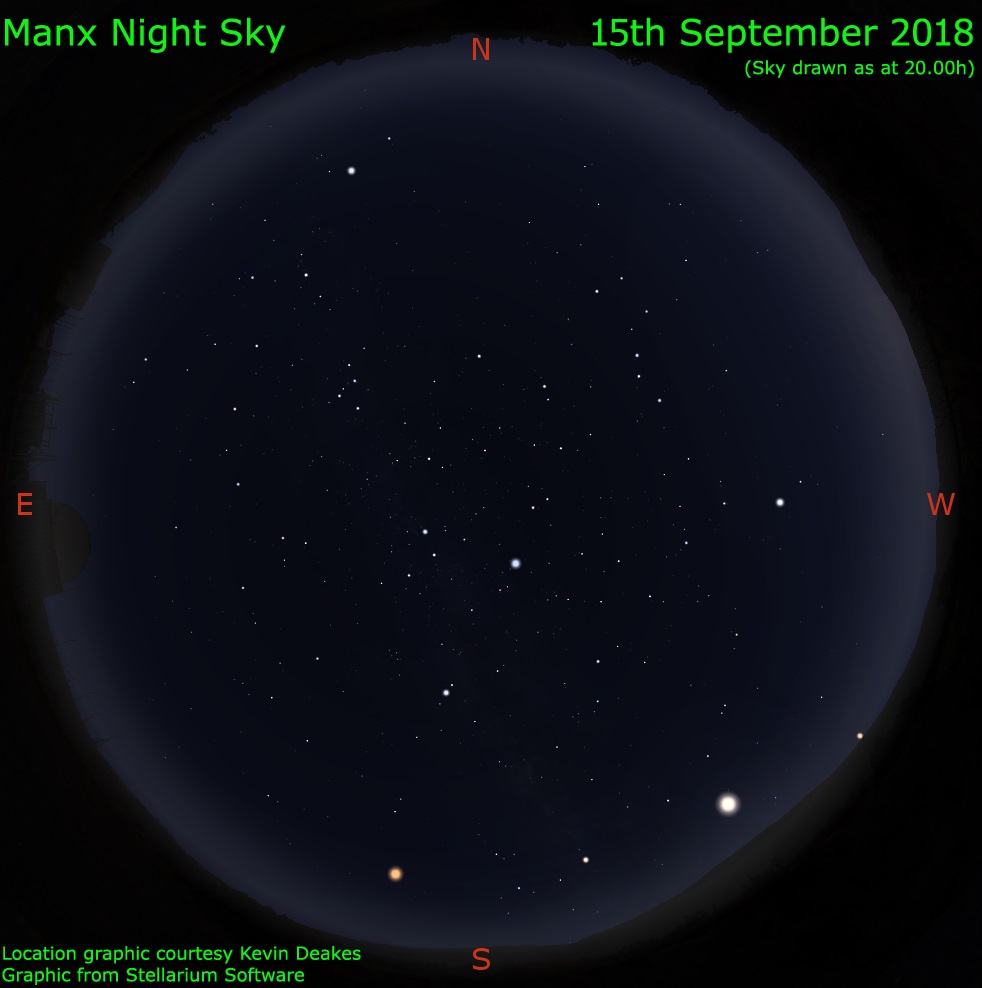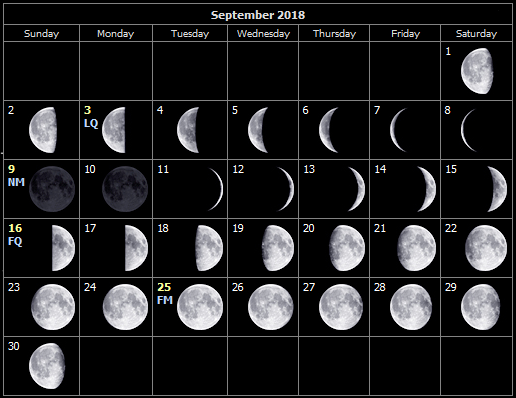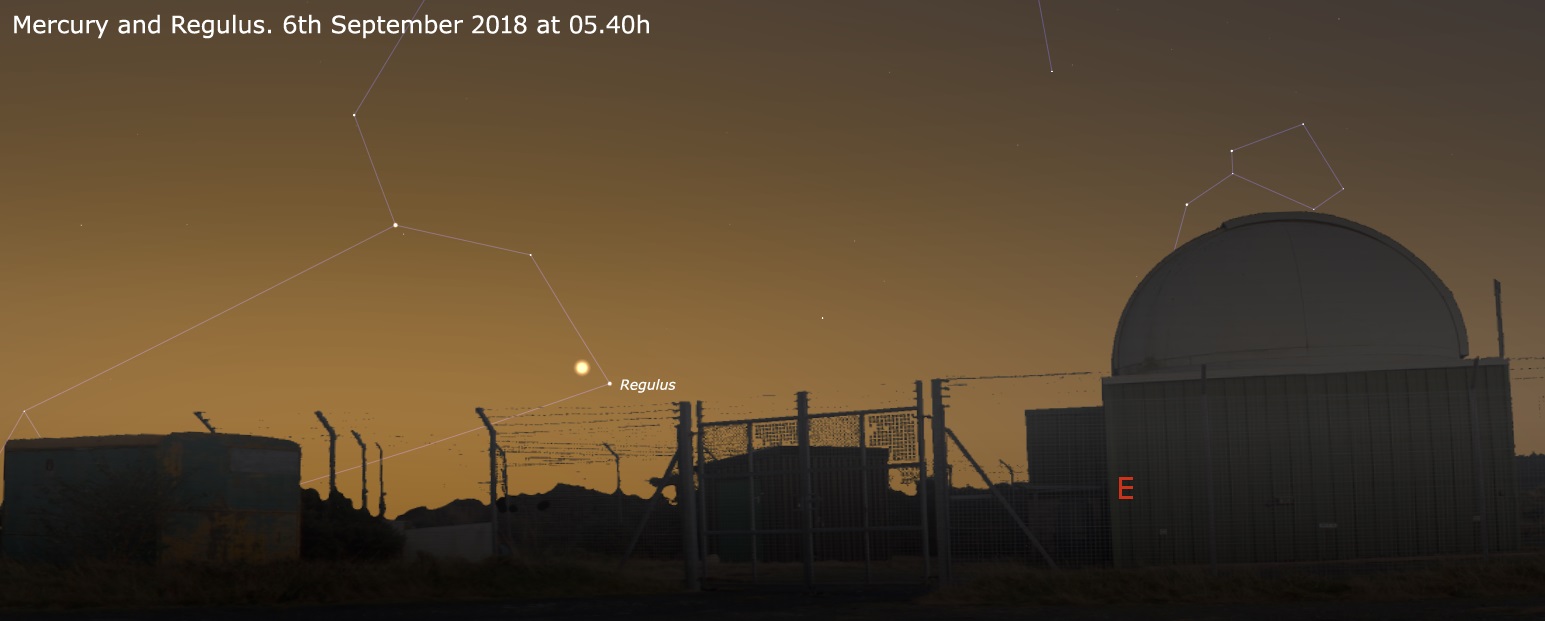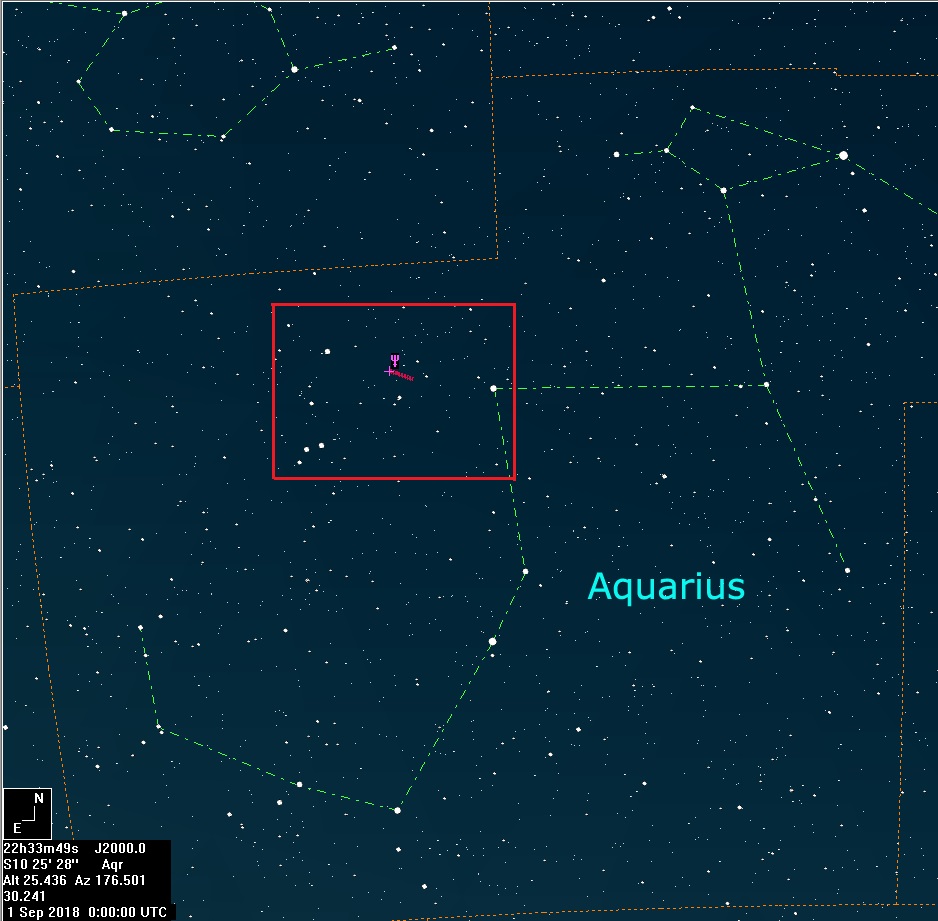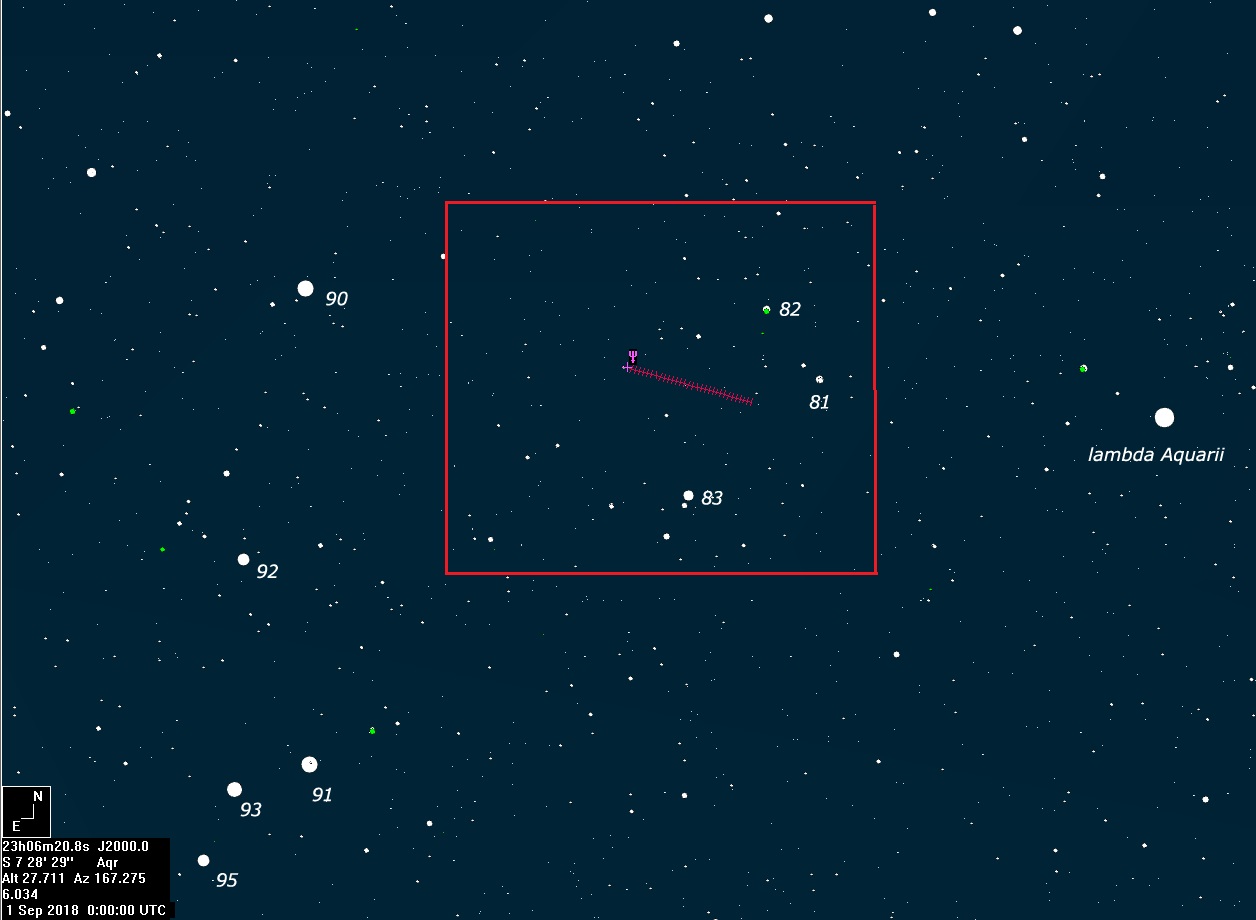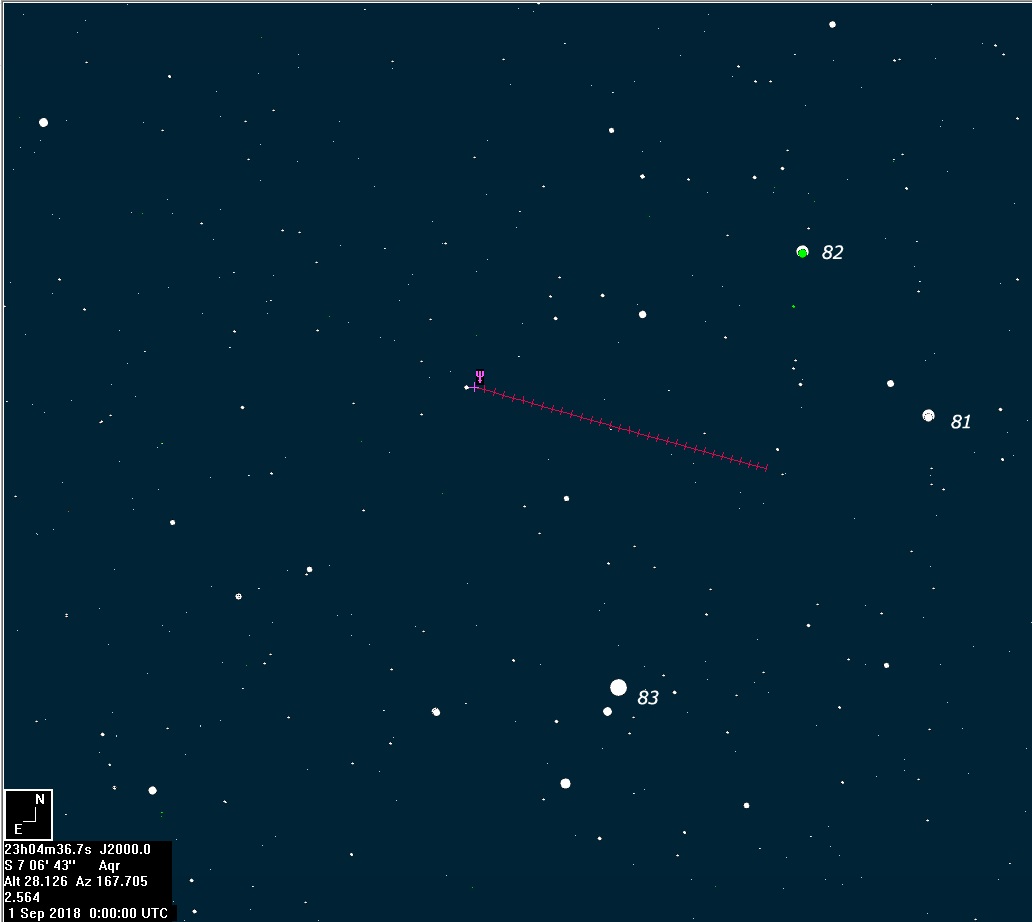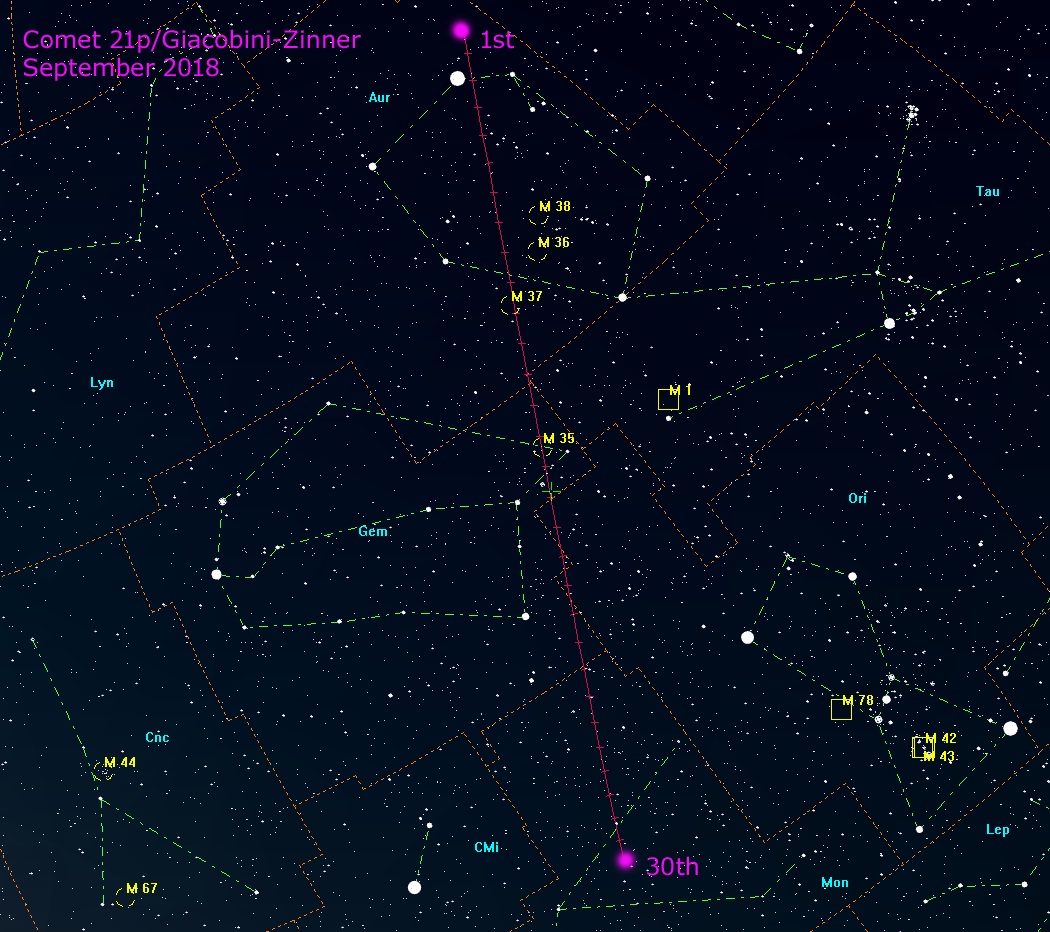In Manx skies... September 2018 ~ compiled by Dave Storey
New
9th
at
18.03h
First Quarter
16th
at
23.16h
Full
25th
at
02.54h
Last Quarter
3rd
at
02.39h
Note: All times are
Universal Time (UT)
British Summer Time
is now in force. Remember to add 1 hour to any times quoted here
to get local IoM time.
Autumn Equinox occurs on 23rd at 01.55h.
There are no solar or lunar eclipses this month.
Solar activity is low with solar cycle 24 now in force.
WARNING: NEVER DIRECTLY OBSERVE THE SUN WITH YOUR NAKED EYES AND/OR OPTICAL INSTRUMENTATION: YOU WILL BE BLINDED!
Carrington's Solar Rotation number 2208 starts on the 2nd at 07h29m05s.
Is in the morning skies during the first week of the month shining at magnitude -0.8. On the 1st, it will rise at 03.41h which is about 1hour 40 minutes before sunrise. On the morning of the 6th, Mercury passes 1° north of the star Regulus in Leo. Mercury will be the brighter of the two, shining at magnitude -1.1compared to Regulus at +1.4. From this date, Mercury moves even close to the sun and it will become lost in the bright dawn sky. It goes through superior conjunction (far side of the Sun) on the 21st when it will pass 1.5° north of the Sun.
Will be very low soon after sunset during the month, shining at magnitude -4.6. The planet is not well place for viewing from northern latitudes this month due to the angle of the ecliptic being at a shallow angle with the horizon. The planet will always be low down when darkness falls. By the end of the month, Venus will be setting at the same time as the Sun.
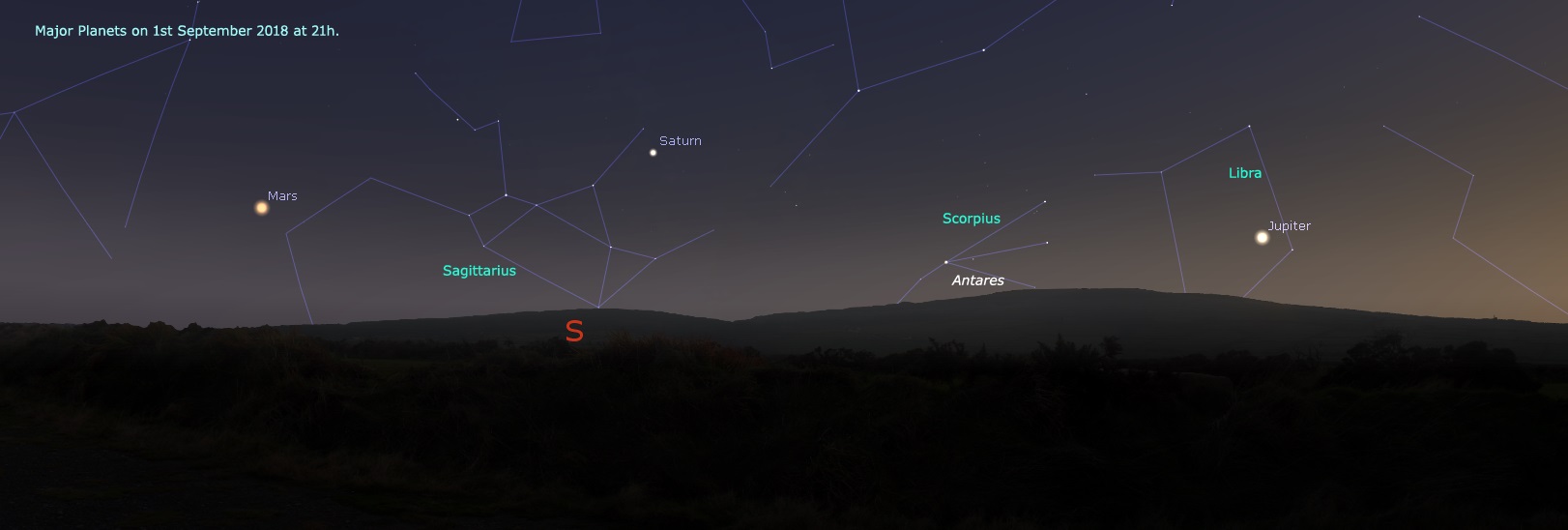
Now
well pass opposition, will be found low in the south after sunset.
It will be bright at magnitude -2.1 on the 1st and
fading to -1.3 by months end. The disc of the planet will be
getting smaller as it draws away from Earth, from an apparent
diameter of 20.8 arc seconds to 15.6 arc seconds. Any view as seen
through a telescope from the Isle of Man will be degraded due to
the low altitude of the planet.
Will be very low in the south west after sunset at the start of the month. It will be poorly placed for viewing this month.
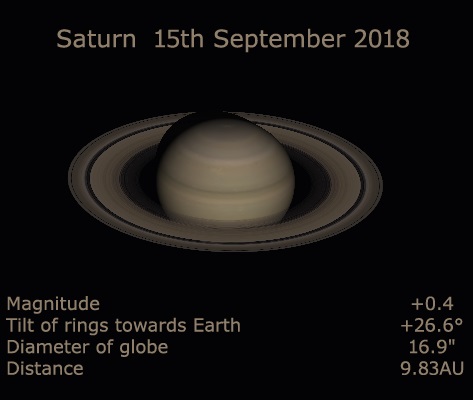 Is
in Sagittarius this month, low in the south after sunset. It
shines at magnitude +0.4 to +0.5 and as seen through a telescope,
the rings of the planet are well presented towards the Earth at an
angle of +26°.
Is
in Sagittarius this month, low in the south after sunset. It
shines at magnitude +0.4 to +0.5 and as seen through a telescope,
the rings of the planet are well presented towards the Earth at an
angle of +26°.
The bright moon Titan (magnitude +8.7) can be seen west of the planet on the 9th ,10th ,11th ,12th ,25th ,26th ,27th and 28th . It will be found east of the planet on 1st ,2nd ,3rd ,17th ,18th and 19th .
Is at opposition on the 7th in Aquarius, shining at magnitude +7.8 so a telescope will be required to see the planet. It will have an apparent disc diameter of 2.4 arc seconds. At this time, the planet is at a distance of 28.9 astronomical units (4,328,000,000 km).
Use the star charts below to locate this planet. The red boxes show the next higher scale map. Numbers in charts are Flamsteed Star Catalogue numbers.
Piscid meteors are active during September and October. There are three nights of peak activity; 9th ,21st September and one on 13th October. The rate is low with 10 meteors (ZHR) on the 9th and 5 per hour on the 21st . Radiants for 9th and 21st are RA 00h36m Dec. +07° and 00h24m Dec. 00° respectively.
Date Time ZC# SAO# Magnitude. P.A. Type of event. Notes
21st 20.19:26 3171 164560 +3.7 116° DD gamma
Cap.
D*
23rd 21.38:08 3425 146620 +4.4 070° DD psi1
Aqr.
D*
27th 21.20:38 364 110543 +4.3 268° RD xi2
Cet.
28th 23.15:12 491 93416 +6.0 116° RD D*
30th 02.06:58 650 93900 +5.6 292° RD 63
Tau. D*
For
very detailed list of occultations visible this month, click
here. Data from Occult Software.
Times
are UT as seen from IoMAS Observatory. Start to observe these
events about 20 minutes before the above times to allow for
differences in your latitude and longitude. This will give you
time to locate the star that is about to be occulted.
ZC
= Zodiacal Catalogue. Type of Event DD = disappearance at dark
limb, RD = Reappearance at dark limb. RB = Reappearance on bright
limb. PA = Position Angle around limb of the Moon, where 0 degrees
is north, 90 degrees is east, 180 degrees is south and 270 degrees
is west.
D* = Double Star M* = Multiple Star.
The above
predictions were calculated from Occult software by David Herald.
More information regarding this software may be found at the
lunar-occultations.com
web site.
This star drops from magnitude +2.1 to +3.4 in about 5 hours. Suitable events visible from the Isle of Man this month occur on 7th at 02.42h, 9th at 23.30h and 30th at 01.18h. Click here for a star chart for Algol.
Comet
Comet 21P/Giacobini-Zinner will grace the northern sky this month, starting the month at magnitude +7.2 and brightens slightly to +7.0 by the 10th. After this date, it will start to fade and be down to magnitude +7.6 by the end of month. It will passes very close to the bright star Capella in Auriga on the night of the 2nd at less than 1° separation. It will be low down in the north after sunset but gets better for viewing as it rises higher into the north eastern sky by the early morning hours. Use the chart below to track down this this fuzzy comet. You will need the use of either binoculars or telescope to see it plus a nice dark sky.
Click here for an ephemeris of this comet.
The international Space Station crosses the Manx skies on a regular basis. For the latest information on when the ISS is due to pass across the sky over the next ten days, visit the link below.
Bibliography for Manx Night Skies
The
Handbook of the British Astronomical Association 2018. BAA.
2017
2018 Stargazing. Heather Couper & Nigel Henbest.
Philip's 2017
2018 Guide to the Night Sky. Storm Dunlop &
Wil Tirion. Collins 2017
Yearbook of Astronomy 2018. Brian
Jones/Richard Pearson. Pen & Sword White Owl. 2017
Observer's
Handbook Meteors. Neil Bone. Philip's 1993
Atlas of the Night
Sky. Storm Dunlop. Collins. 2005
Constellations. Josef Klepešta
and Antonin Rükl. Hamlyn. 1979
Brilliant Stars. Patrick
Moore. The Book People Ltd. 1996
Complete Guide to Stargazing.
Robin Scagell. Phillip's. 2006
Turn Left at Orion. Guy
Consolmango and Dan M. Davis. Cambridge U.P. 2008
Norton's
2000.0 Edited Ian Ridpath. Longman Scientific & Technical.
1989
Planetary data derived from
Guide 9
Software.
Picture graphics derived from Stellarium
and Guide 9 Software.
